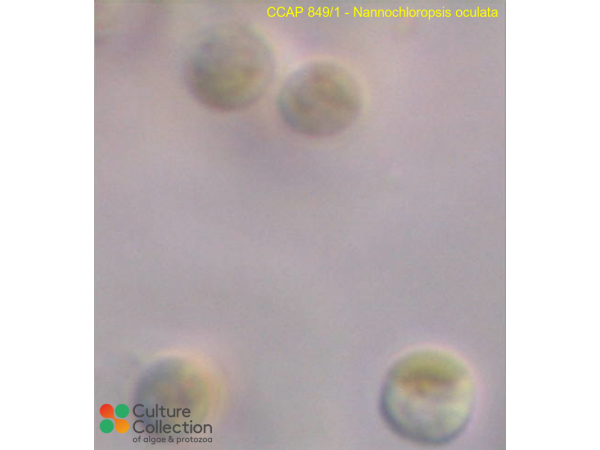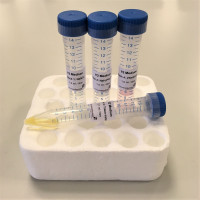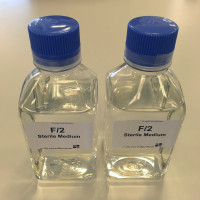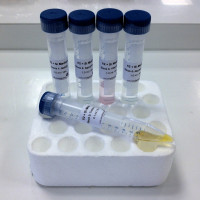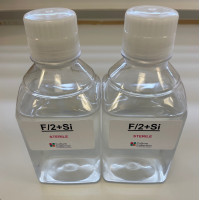References [ 31 ]
Flynn KJ, Davidson K & Cunningham A (1993) Relations between carbon and nitrogen during growth of Nannochloropsis oculata (Droop) Hibberd under continuous illumination. New Phytologist 125: 717-722.
Flynn KJ, Davidson K & Leftley JW (1993) Carbon-nitrogen relations during batch growth of Nannochloropsis oculata (Eustigmatophyceae) under alternating light and dark. Journal of Applied Phycology 5(4): 465-475.
Day JG, Benson EE & Fleck RA (1999) In Vitro Culture and Conservation Of Microalgae: Applications For Environmental Research, Aquaculture & Biotechnology. In Vitro Cellular & Developmental Biology - Plant 35: 127-136.
Hibberd DJ & Norris RE (1984) Cytology and ultrastructure of Chlorarachnion reptans (Chlorarachniophyta divisio nova, Chlorarachniophyceae classis nova). Journal of Phycology 20(2): 310-330.
Ehara M, Kitayama T, Watanabe KI, Inagaki Y, Hayashi-Ishimaru Y & Ohama T (1999) Comprehensive molecular phylogenetic analysis of a heterokont alga (NIES 548) using genes from all three cellular compartments. Phycological Research 47: 225-231.
Clark DR, Merrett MJ & Flynn KJ (1999) Utilization of dissolved inorganic carbon (DIC) and the response of the marine flagellate Isochrysis galbana to carbon or nitrogen stress. New Phytologist 144: 463-470.
DOI: none
Andersen RA, Brett RW, Potter D & Sexton JP (1998) Phylogeny of the Eustigmatophyceae based upon 18S rDNA, with emphasis on Nannochloropsis. Protist 149: 61-74.
Natrah FMI, Kenmegne MM, Wiyoto W, Sorgeloos P, Bossier P & Defoirdt T (2011) Effects of micro-algae commonly used in aquaculture on acyl-homoserine lactone quorum sensing. Aquaculture 317: 53-57.
Chen Y & Vaidynanthan S (2012) A simple, reproducible and sensitive spectrophotometric method to estimate microalgal lipids. Analytica Chimica Acta 724: 67-72.
Day JG, Thomas NJ, Achilles-Day UEM & Leakey RJG (2012) Early detection of protozoan grazers in algal biofuel cultures. Bioresource Technology 114: 715-719.
Slocombe SP, Ross M, Thomas N, McNeill S & Stanley M (2013) A rapid and general method for measurement of protein in micro-algal biomass. Bioresource Technology 129: 51-57.
Roleda MY, Slocombe SP, Leakey RJG, Day JG, Bell EM & Stanley MS (2013) Effects of temperature and nutrient regimes on biomass and lipid production by six oleaginous microalgae in batch culture employing a two-phase cultivation strategy. Bioresource Technology 129: 439-449.
Durmaz Y (2007) Vitamin E (a-tocopherol) production by the marine microalgae Nannochloropsis oculata (Eustigmatophyceae) in nitrogen limitation. Aquaculture 272: 717-722.
Ehara M, Watanabe KI, Kawai H, Inagaki Y, Hayashi-Ishimaru Y & Ohama T (1998) Distribution of the mitochondrial deviant genetic code AUA for methionine in heterokont algae. Journal of Phycology 34: 1005-1008.
DOI: none
Droop MR (1955) Some new supra-littoral protista. Journal of the Marine Biological Association of the UK 34: 233-245.
DOI: none
Li F, Gao D & Hu H (2014) High-efficiency nuclear transformation of the oleaginous marine Nannochloropsis species using PCR product. Bioscience, Biotechnology, and Biochemistry 78: 812-817.
Suda S, Atsumi M & Miyashita H (2002) Taxonomic characterization of a marine Nannochloropsis species, N. oceanica sp. nov. (Eustigmatophyceae). Phycologia 41: 273-279.
Beacham TA, Bradley C, White DA, Bond P & Ali ST (2014) Lipid productivity and cell wall ultrastructure of six strains of Nannochloropsis: Implications for biofuel production and downstream processing. Algal Research 6: 64-69.
Wong DM, Nguyen TTN & Franz AK (2014) Ethylenediaminetetraacetic acid (EDTA) enhances intracellular lipid staining with Nile red in microalgae Tetraselmis suecica. Algal Research 5: 158-163.
Day JG, Burt DJ, Achilles-Day UEM & Stanley MS (2013) Future algal biofuels: Implications of environmental temperature on production strain selection. International Journal of Ambient Energy 36: 248-252.
Polishchuk A, Valev D, Tarvainen M, Mishra S, Kinnunen V, Antal T, Yang B, Rintala J & Tyystjärvi E (2015) Cultivation of Nannochloropsis for eicosapentaenoic acid production in wastewaters of pulp and paper industry. Bioresource Technology 193: 469-476.
Slocombe SP, Zhang QY, Ross M, Anderson A, Thomas NJ, Lapresa A, Rad Menéndez C, Campbell CN, Black KD, Stanley MS & Day JG (2015) Unlocking nature's treasure-chest: Screening for oleaginous algae. Scientific Reports 5: 09844.
Barbano D, Diaz R, Zhang L, Sandrin T, Gerken H & Dempster T (2015) Rapid characterization of microalgae and microalgae mixtures using Matrix-Assisted Laser Desorption Ionization Time-Of-Flight Mass Spectrometry (MALDI-TOF MS) PLoS ONE 10(8): e0135337.
Pond DW, Leakey RJG & Fallick AE (2006) Monitoring microbial predator-prey interactions: an experimental study using fatty acid biomarker and compound-specific stable isotope techniques. Journal of Plankton Research 28: 419-427.
Hou Y, Liu Z, Zhao Y, Chen S, Zheng Y & Chen F (2016) CAH1 and CAH2 as key enzymes required for high bicarbonate tolerance of a novel microalga Dunaliella salina HTBS. Enzyme and Microbial Technology 87-88: 17-23.
McKennedy J, Onenc S, Pala M & Maguire J (2016) Supercritical carbon dioxide treatment of the microalgae Nannochloropsis oculata for the production of fatty acid methyl esters. The Journal of Supercritical Fluids 116: 264-270.
Taleb A, Kandilian R, Touchard R, Montalescot V, Rinaldi T, Taha S, Takache H, Marchal L, Legrand J & Pruvost J (2016) Screening of freshwater and seawater microalgal strains in fully controlled photobioreactors for biodiesel production. Bioresource Technology 218: 480-490.
Fawley MW, Jameson I & Fawley KP (2015) The phylogeny of the genus Nannochloropsis (Monodopsidaceae, Eustigmatophyceae), with descriptions of N. australis sp. nov. and Microchloropsis gen. nov.. Phycologia 54: 545-552.
Hughes AH, Magot F, Tawfike A, Rad-Menéndez C, Thomas N, Young LC, Stucchi L, Carettoni D, Stanley MS, Edrada-Ebel R & Duncan KR (2021) Exploring the chemical space of macro- and micro- algae using comparative metabolomics Microorganisms 9: 311.
McLeod AR, Brand T, Campbell CN, Davidson K & Hatton A (2021) Ultraviolet radiation drives emission of climate-relevant gases from marine phytoplankton. Journal of Geophysical Research: Biogeosciences 126: 9.
Hughes AH, Magot F, Tawfike AF, Rad Menéndez C, Thomas N, Young LC, Stucchi L, Carettoni D, Stanley MS, Edrada-EBel R & Duncan KR (2021) Exploring the chemical space of macro- and micro-algae using comparative metabolomics. Microorganisms 9: 311.

